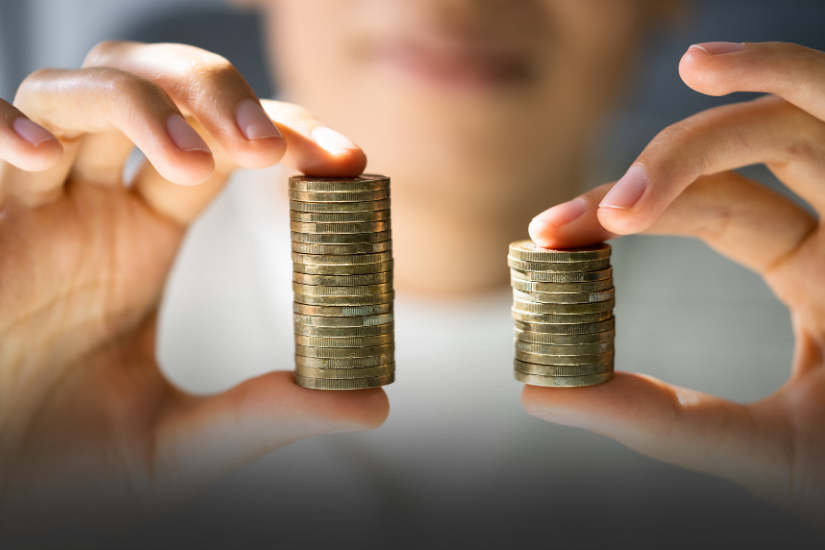1 min read
Sponsors Explained
What is a sponsor and why are they important for women in the workplace? Whilst many conflate sponsors with mentors, sponsors go further in...
Insights to help leaders and organisations thrive and drive growth & inclusion.
Geraldine Gallacher Keynote Speaker
Speaker, podcaster, author and master coach.
Our resource hub for working parents, carers and managers navigating work-life balance.
Real stories from leaders driving inclusion & equity in today’s shifting world.
Fortnightly insights on leadership, equity & the future of work. For senior leaders & curious thinkers.
A monthly digest of the shifts shaping how we lead and work.
2 min read
 Phoebe Rees | Research & Impact Manager
:
Sep 2, 2023 12:00:00 AM
Phoebe Rees | Research & Impact Manager
:
Sep 2, 2023 12:00:00 AM

In the UK, it’s compulsory for all organisations with 250+ employees to publish their Gender Pay Gap (GPG) by calculating the difference between women’s and men’s average hourly earnings. Rather than solely measuring the difference in compensation for men and women with the same role, the calculation must reflect the averages across the entire organisation. So, if more men are in higher-paid roles than women who are also in a lower-salary bracket, the GPG will be wider.
In 2021 in the UK, the national gender pay gap was 15.4%, continuing the trajectory of a slow decline; in 1997, the national GPG was 27.5%. The UK government publish GPG data, including analysis that shows the experience of different segments of workers, including by age, ethnicity, caring responsibilities, education level, full/part time working status, and region. Extensive research conducted by Professor Correll at Stamford University found that the pay gap between mothers and women without children is more significant than between men and women.
Across the world, countries record ‘Equal Pay Day’ differently and the dates change annually. The UN General Assembly declared September 18th International Equal Pay Day, estimating that the global average GPG is 20%. In the USA, the date represents how far into the year women must work before they match men’s earnings from the year before. In 2022, the date was March 15th, meaning women work on average 15 months for a man’s 12 months. For women of ethnic minorities, this day differs. In 2022 Black women’s Equal Pay Day was September 21st, and the date for Latina women was December 8th, according to Equal Pay Today.
In the UK, Equal Pay Day is when women start working for no pay for the work that they will do that year. In 2021 it was November 18th on average, correlating to the 15.4% average GPG, but the date was significantly earlier for women of ethnic minorities. For Black Caribbean women the date was 26th October, for Black African women the date was 27th September and for Bangladeshi women the date was 19th September. The Pakistani women experience the most significant GPG, with their Equal Pay Day as the 8th September – representative of a 31% GPG.
Related Concepts
Related Research
For more information on the Gender Pay Gap, read ECC’s summary of the research paper ‘Women’s Progression in the Workplace‘ by the Government Equalities Office. This provides a clear overview of the various factors impacting women’s pay and role progression and outlines interventions that can counter the GPG widening further.
ECC’s summary of ‘HM Treasury’s ‘Women in Finance’ Charter outlines the organisations taking initiatives to set targets for achieving gender parity in the some of the largest financial sector organisations worldwide.
Related Assets
ECC’s explainer on ‘Why there are so few women in leadership roles’ contains a deeper dive into how the gender pay gap impacts women’s career progression.
Click here to learn more about Women’s Development Programmes: 6 Lessons from Designing Women’s Development Programmes
Click here to learn more about Inclusive Leadership: Intro to Developing Inclusive Leaders

1 min read
What is a sponsor and why are they important for women in the workplace? Whilst many conflate sponsors with mentors, sponsors go further in...

1 min read
What is unpaid labour? Unpaid labour does not mean working for free in the professional sense, as in volunteering or providing pro-bono services....

1 min read
Second Generation Bias Explained Second Generation Bias is a form of discrimination women experience in the workplace. Rather than ...